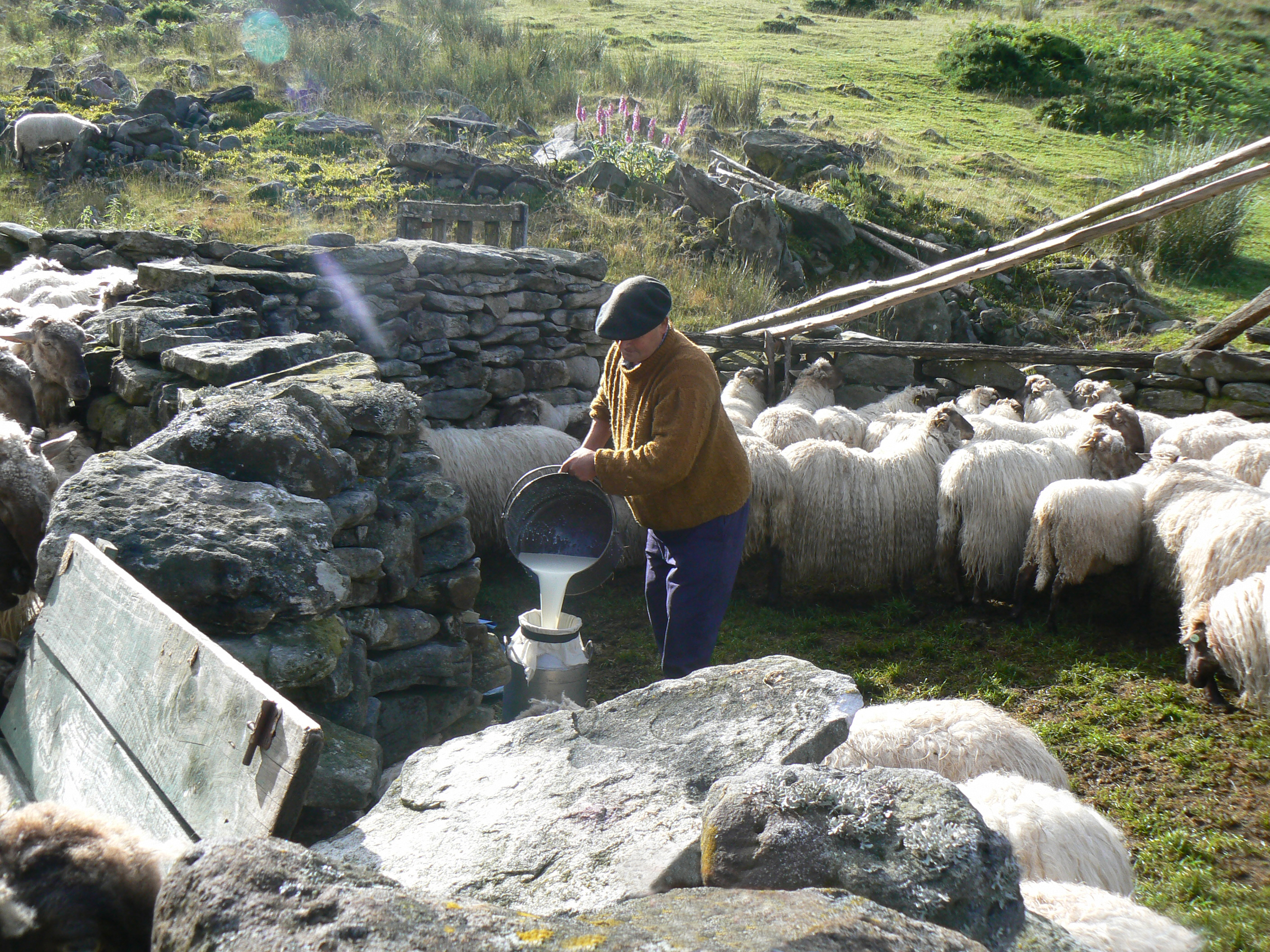Basque ethnography at a glance

Grazing cattle in Carranza (Bizkaia). Luis Manuel Peña. Archivo Fotográfico Labayru Fundazioa.
In the Valley of Carranza (Bizkaia) there is a long-established livestock farming culture, and a significant part of the population would once upon a time make their living from milk production, thus developing strong links with dairy cattle, and as a result acquiring certain ways of expressing themselves when referring to behaviour patterns and other human traits. (more…)
Summer is prime time for the celebration of patron saint festivities, along with local festivals in neighbourhoods and at hermitages. In the old days, and until just a few decades ago, such events would be customarily organized by informal groups of youth.
As a matter of fact, we would like to take this opportunity to recall a tradition, once common in many localities of Bizkaia but which disappeared during the civil war: namely, that of the so-called zaragi-mutilak ‘lads of the wineskin’. Indeed, a group of youth, known as eskota in the region of Uribealdea, would share the cost of a full wineskin for drinking and feasting. Most notably observed in the municipality of Mungia, particularly in the neighbourhoods of Atxuri, Belako, Billela, Elgezabal, Iturribaltzaga, Laukariz, Markaida and Trobika, the custom persisted until the mid-20th century. Practically lost today, barely survives, being partly maintained, only in the neighbourhoods of Atxuri and Trobika. (more…)

Itziar Rotaetxe. Labayru Fundazioa Photographic Archive.
Ubixeta, one of the main refuge areas in Gorbeia, has been home for at least five herds and herders until only a few years ago. Five shepherds spread over four sheds, still standing at present.
Of them all, Jose Ereño, native of Orozko (Bizkaia), is very much alive and kicking. He keeps climbing the mountain with his flock and would, until recently, make cheese using traditional methods, like his father, his father’s father… (more…)

Parhelion. Josu Larrinaga Zugadi.
The eve and the feast day of St John (24 June) are well known to encompass a large amalgam of symbolic rituals associated to earth (people, animals, harvests and protective vegetables), water (beliefs about cleansing, regeneration and healing), air (magic moment for purging from nocturnal and malignant beings) or fire (purifying or renewing element). As regards the latter, we are familiar with the custom of climbing certain highlands in the early hours of St John’s Day to observe the dance performed by the king star or dancing sun (optical effect of the scientifically so-called sun dog, parhelion or fake sun). (more…)


